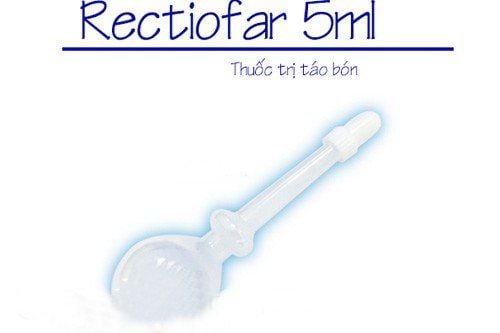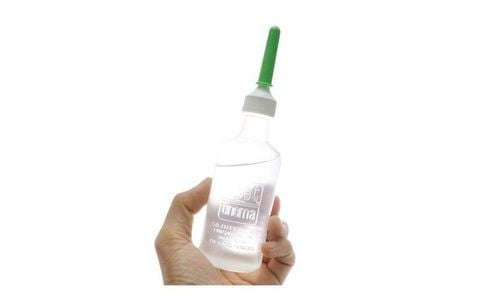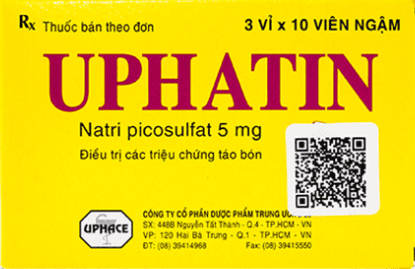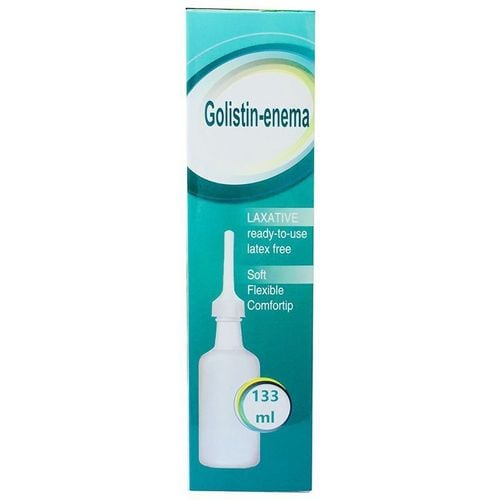This is an automatically translated article.
Lainema belongs to the group of laxatives, used to support stool excretion and clean the intestines when patients have problems such as constipation or rectal disease... Besides its therapeutic uses, Lainema also has other side effects. side effects that the patient should be aware of.
1. What is Lainema?
Lainema has the main ingredient of Monosodium Phosphate (as sodium dihydrogen phosphate dihydrate) 13.9g. Disodium Phosphate (as disodum phosphate dodecahydrate) 3.2g. Lainema is used in the following cases:
The drug is used to clean the intestines: Before and after birth, before and after surgery, sigmoidoscopy, cases of tight stools, accumulation of hard stools in the rectum. Support stool excretion in cases such as: Patients with constipation, used for patients before surgery, people lying in one place for a long time or before colonoscopy and colonoscopy. Mechanism of action of the drug:
Lainema contains phosphate salts of sodium, which is effective in increasing hydrostatic pressure, and at the same time pulling water into the colon to soften stools and laxatives.
In addition, Lainema also has a lubricating effect on the gastrointestinal tract, rectum and colon. Lainema makes it easier for patients to pass stools.
2. Dosage and how to take Lainema
Usage: Lainema belongs to the group of rectal drugs, used through the anus. The patient places the tip of the ampoule into the rectum, gently pressing the container to make it easier for the medicine to enter the rectal tube
Dosage of medicine:
For children under 2 years old: The doctor does not recommend using Lainema for patients. icon above. For children aged 2-15 years: The dose of Lainema is prescribed according to the weight of the child. The recommended dose should be used 5ml/kg body weight, once a day and the maximum dose should be 140ml. For adults: Refer to the daily dose of 140ml or 250ml. For patients with liver and kidney function problems: There may be no need to adjust the dose of the drug, but apply the dose for normal patients. Note: If the time of using Lainema is more than 6 days but the condition does not improve, the patient should temporarily stop using the drug and consult a doctor, maybe other more effective treatment measures should be used.
3. Contraindications of Lainema
Do not use Lainema with patients who have a history of allergy to ingredients Monosodium Phosphate, Disodium Phosphate or are sensitive to any other ingredients or excipients in the drug. Patients with or signs of diseases such as dyspepsia, gastrointestinal obstruction, appendicitis, and gastrointestinal bleeding. The patient is dehydrated, losing a lot of fluid. Absolutely do not use Lainema for children under 2 years old.
4. Unwanted side effects
Possible side effects when using the drug include: Severe hypocalcemia, hypocalcemia or hyperphosphatemia. Therefore, patients at risk for hyperphosphatemia need regular health monitoring to control phosphorus levels in the body.
Other common side effects of Lainema are: irritability, low blood pressure, muscle spasticity, pallor, tetanus, increased heart rate, convulsions, phobias, fatigue, weakness and coma.
Very rare reactions of Lainema include: Severe hyperphosphatemia, tetanus, anal pruritus, hypocalcaemia, skin blistering, restlessness and pruritus.
If experiencing these symptoms, the patient should stop using Lainema and notify the doctor for appropriate treatment.
5. Be careful when taking Lainema
Lainema should be used with caution in the elderly, with medical conditions, patients with moderate or mild renal impairment, heart disease, electrolyte imbalance, as these cases are prone to side effects. are hypercalcaemia, hypokalemia, hyperphosphatemia, hypernatremia or acidosis. For cases in patients with suspected electrolyte disturbances or at risk of hyperphosphataemia, electrolyte levels should be analyzed before and after drug administration. Long-term and continuous use of Lainema is not recommended to avoid drug addiction. Do not take Lainema for more than 6 days if the disease is not controlled. Because Lainema can cause a bowel disorder that is dependent on the drug. If the body shows signs of resistance, the patient should stop treatment when there are signs because if the patient tries to use Lainema, there is a risk of local damage. If, during treatment with this medicine, you experience anal bleeding, you should stop taking Lainema immediately and consult your doctor, as this could be a sign of a very serious side effect. Pregnancy and breast-feeding: There are currently no studies demonstrating the safety of Lainema for pregnant and lactating women. Therefore, patients in the above two cases should be careful when using the drug, only using Lainema in cases of real necessity with the indication and guidance of a doctor.
6. Drug interactions
Drug interactions are changes in the effects of Lainema or increased drug reactions due to the simultaneous use of Lainema with other drugs or foods and supplements. Therefore, the patient needs to inform the doctor about the medications they are taking or the medical history they have. Especially drugs that change water and electrolyte balance such as diuretics, calcium blockers.
Above is all information about Lainema, patients need to carefully read the instructions for use, consult a doctor / pharmacist before using. Note, Lainema is a prescription drug, patients absolutely must not buy drugs to treat at home because they may encounter unwanted side effects.













